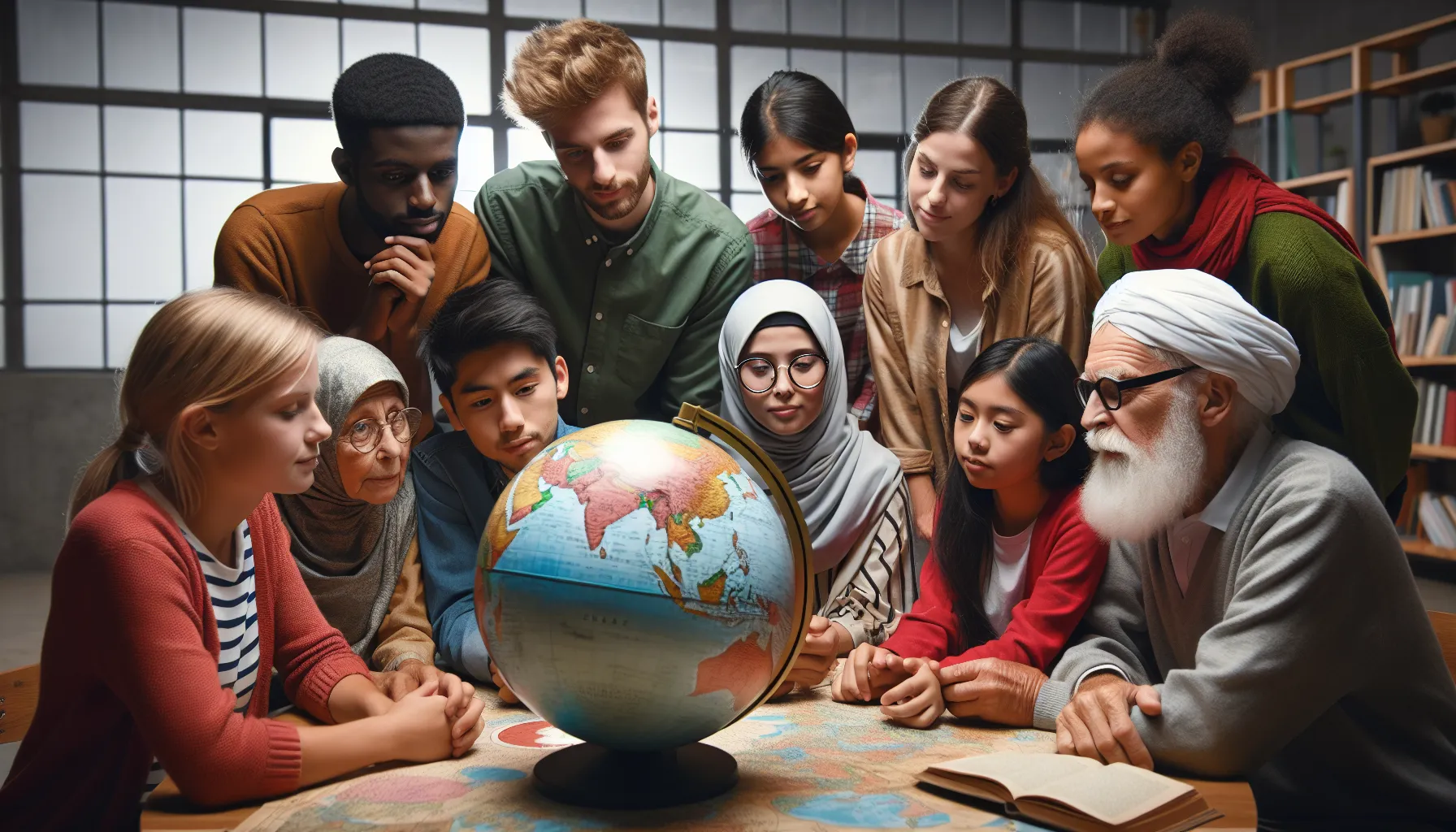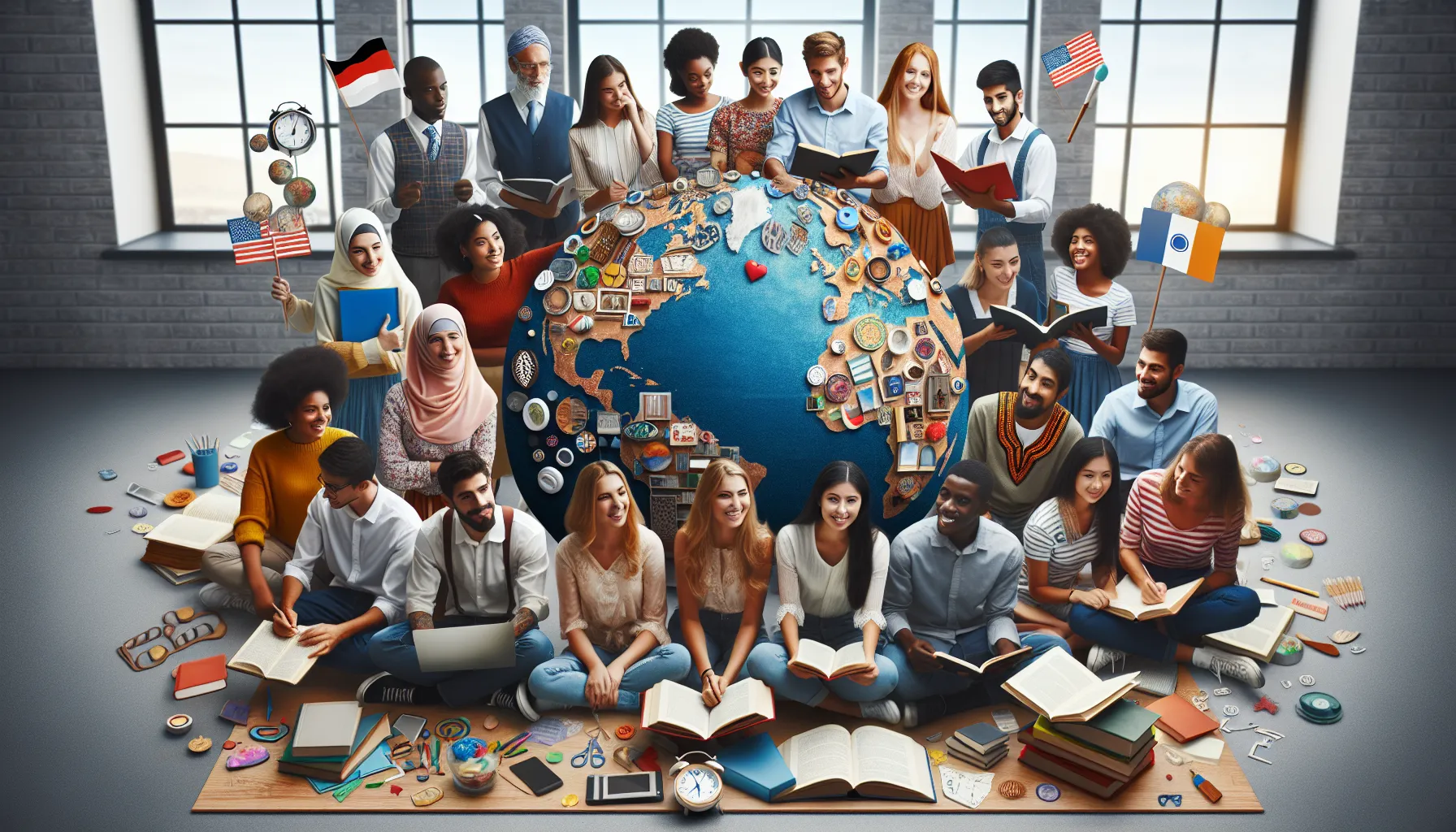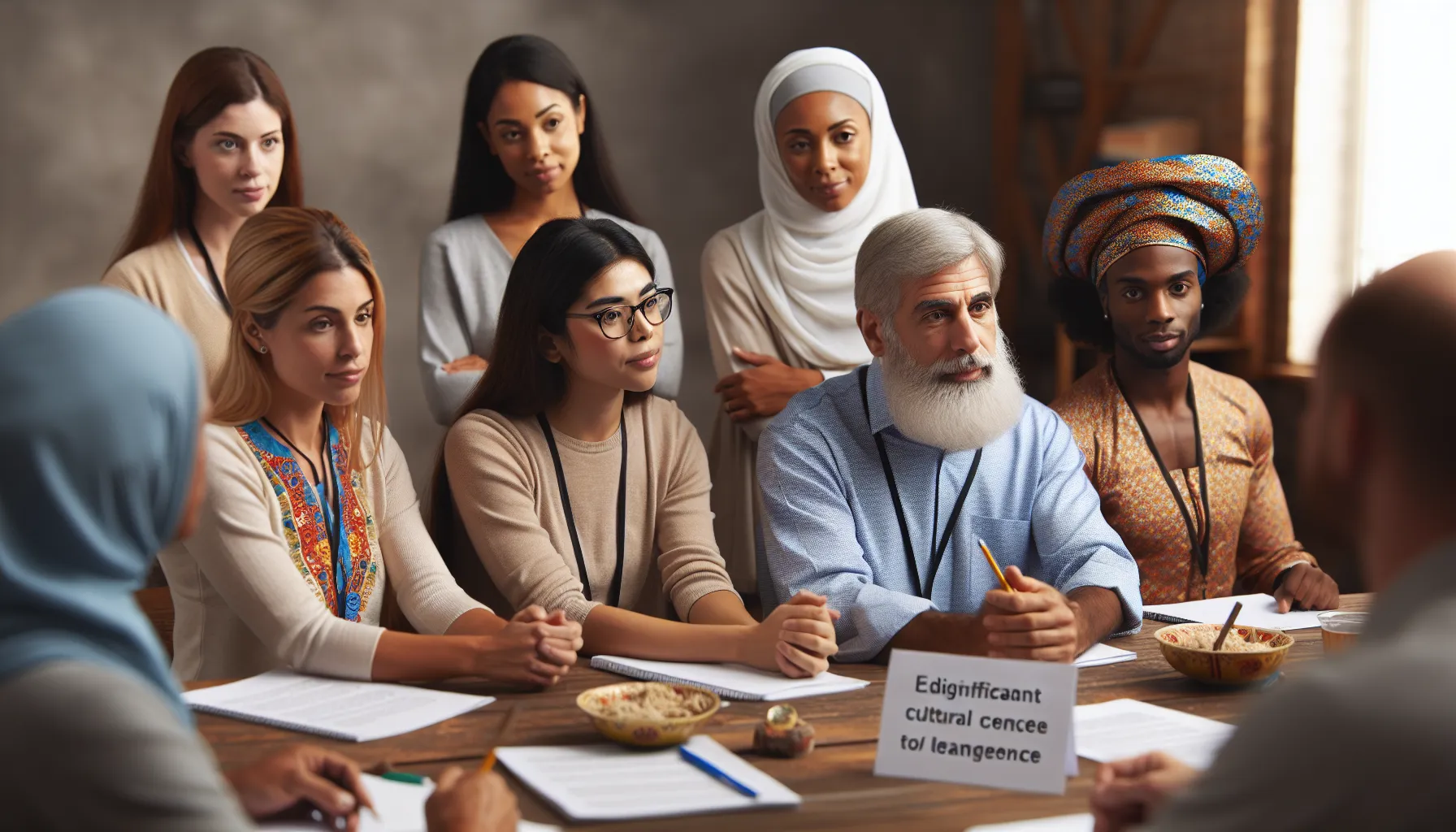Introduction to the IELTS Reading Test on Cultural Diplomacy
The IELTS Reading test is a crucial component of the IELTS exam, assessing candidates’ ability to comprehend complex texts and extract relevant information. In this practice test, we’ll explore the fascinating topic of cultural diplomacy through educational exchanges, a subject that has gained significant importance in our interconnected world.
Nội dung bài viết
- Introduction to the IELTS Reading Test on Cultural Diplomacy
- IELTS Reading Practice Test
- Passage 1 – Easy Text
- The Growth of International Student Programs
- Questions 1-5
- Questions 6-10
- Passage 2 – Medium Text
- The Impact of Educational Exchanges on Cultural Understanding
- Questions 11-16
- Questions 17-20
- Passage 3 – Hard Text
- The Evolution of Cultural Diplomacy in the Digital Age
- Questions 21-26
- Questions 27-32
- Questions 33-40
- Answer Key
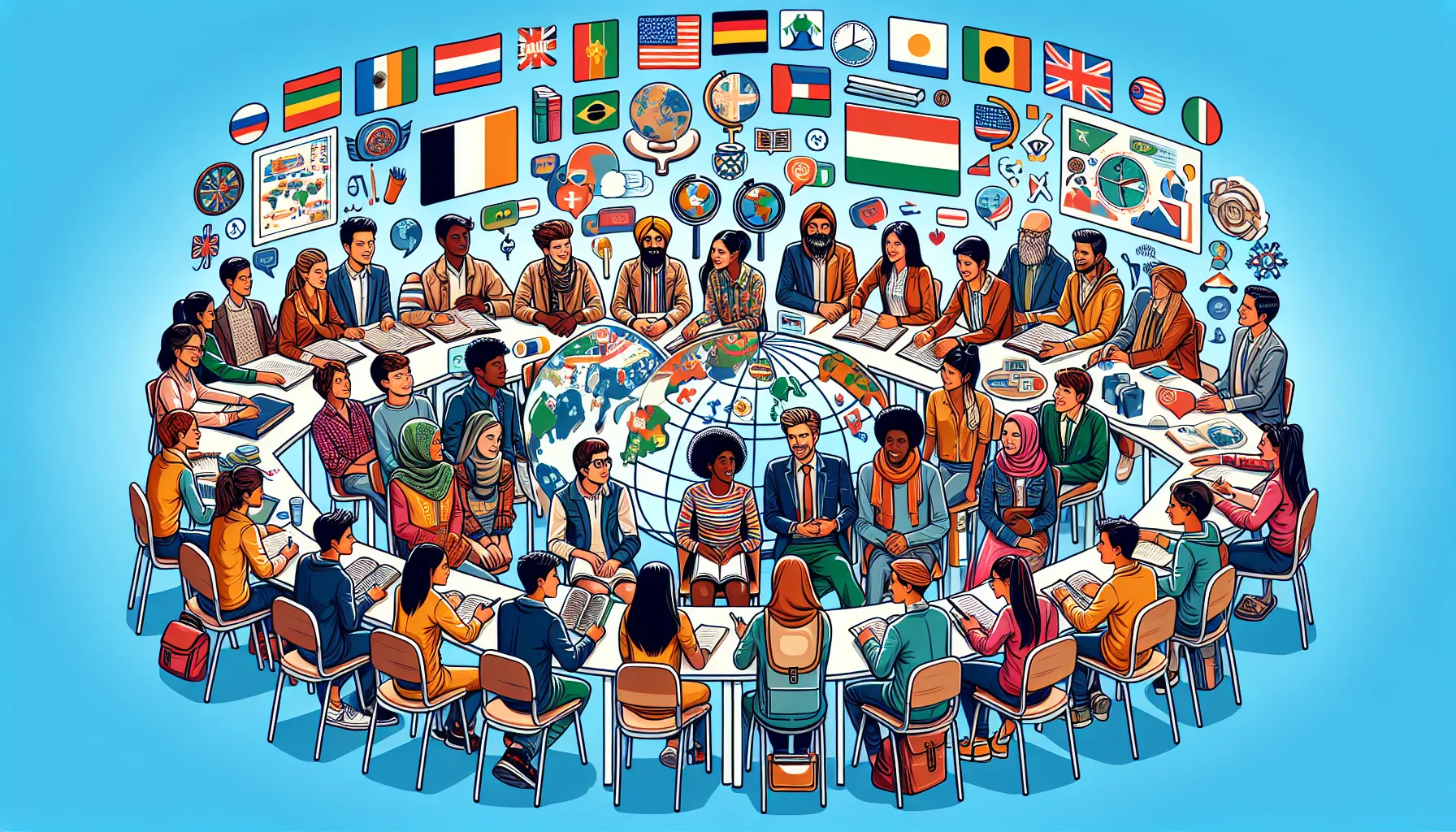 Cultural diplomacy through educational exchanges concept
Cultural diplomacy through educational exchanges concept
IELTS Reading Practice Test
Passage 1 – Easy Text
The Growth of International Student Programs
In recent decades, there has been a remarkable surge in the number of students choosing to study abroad. This phenomenon has contributed significantly to the rise of cultural diplomacy through educational exchanges. Universities worldwide are increasingly recognizing the value of diversity on campus and are actively recruiting international students. These cross-cultural experiences not only enrich the educational journey of individual students but also foster greater understanding between nations.
The benefits of international student programs extend far beyond the classroom. Students who participate in these exchanges often become informal ambassadors for their home countries, sharing their culture, traditions, and perspectives with their peers. This personal interaction helps break down stereotypes and promotes mutual respect among different nationalities. Moreover, many students who study abroad return home with a broader worldview and a deeper appreciation for global issues, making them valuable assets in an increasingly interconnected world.
Governments and educational institutions have begun to view these exchanges as a form of soft power, recognizing their potential to shape international relations positively. By investing in educational exchange programs, countries can build long-lasting relationships that transcend political boundaries. These connections often lead to increased cooperation in various fields, including research, technology, and commerce.
Questions 1-5
Choose the correct letter, A, B, C, or D.
-
What is the main focus of the passage?
A) The challenges of studying abroad
B) The rise of international student programs
C) The cost of higher education
D) The impact of technology on education -
According to the passage, universities are recruiting international students because:
A) It increases their revenue
B) It improves their global ranking
C) They recognize the value of diversity
D) It’s mandated by the government -
The term “informal ambassadors” in the passage refers to:
A) Government-appointed diplomats
B) University staff members
C) International students sharing their culture
D) Tour guides in foreign countries -
What is mentioned as a benefit of studying abroad?
A) Guaranteed employment after graduation
B) Higher grades in academic subjects
C) A broader worldview and appreciation for global issues
D) Fluency in multiple languages -
How do governments view educational exchanges according to the passage?
A) As a form of soft power
B) As a waste of resources
C) As a threat to national security
D) As a minor diplomatic tool
Questions 6-10
Do the following statements agree with the information given in the passage?
Write
TRUE if the statement agrees with the information
FALSE if the statement contradicts the information
NOT GIVEN if there is no information on this
- The number of students studying abroad has decreased in recent years.
- International student programs only benefit the host countries.
- Students who study abroad often challenge stereotypes about their home countries.
- Educational exchanges always lead to improved political relations between countries.
- Universities in all countries actively participate in international student exchange programs.
Passage 2 – Medium Text
The Impact of Educational Exchanges on Cultural Understanding
The role of educational exchanges in fostering global cultural understanding has become increasingly prominent in recent years. These programs, which range from short-term study tours to full degree courses abroad, serve as a catalyst for promoting intercultural dialogue and mutual respect among diverse populations. By immersing students in foreign cultures, educational exchanges provide a unique platform for developing cross-cultural competence and fostering a sense of global citizenship.
One of the most significant impacts of these exchanges is the development of empathy and understanding towards different cultures. When students live and study in a foreign country, they are confronted with new perspectives, customs, and ways of life. This exposure challenges their preconceived notions and encourages them to view the world through a different lens. As a result, participants often return home with a more nuanced understanding of global issues and a greater appreciation for cultural diversity.
Moreover, educational exchanges play a crucial role in language acquisition and communication skills. Immersion in a foreign language environment accelerates language learning and enhances fluency. This linguistic proficiency not only aids in academic pursuits but also equips students with valuable skills for future careers in an increasingly globalized job market. The ability to communicate effectively across cultures is a highly sought-after skill in many industries, from international business to diplomacy.
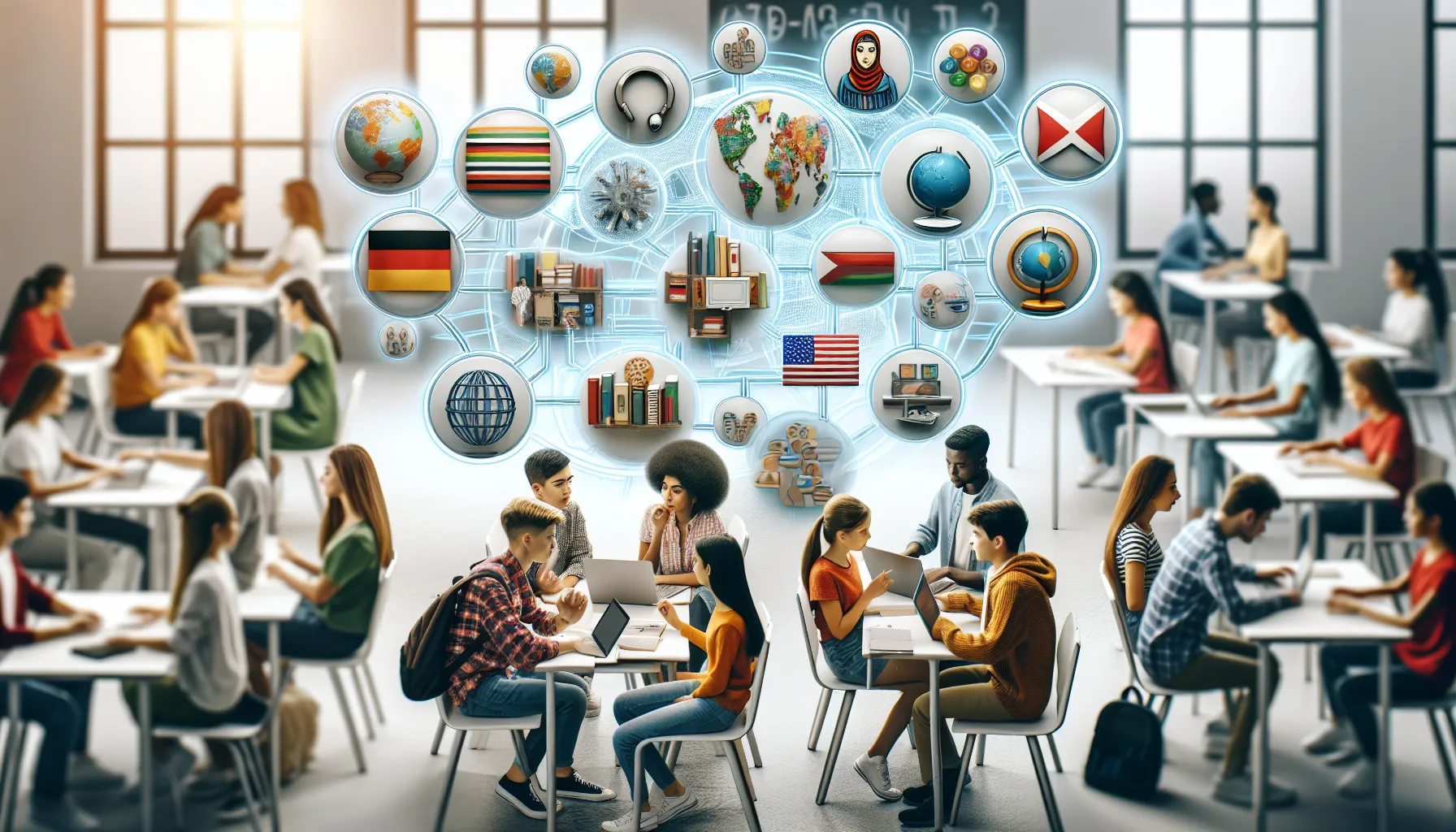 Students from diverse cultures in a classroom
Students from diverse cultures in a classroom
Educational exchanges also contribute to the development of critical thinking skills and adaptability. Students studying abroad are often challenged to navigate unfamiliar systems, solve problems independently, and adapt to new social norms. These experiences foster resilience and flexibility, qualities that are invaluable in both personal and professional contexts. Furthermore, exposure to different educational methodologies and academic cultures can broaden students’ perspectives on learning and knowledge acquisition.
The long-term impact of educational exchanges extends beyond individual participants to affect broader societal attitudes. Alumni of these programs often become advocates for international cooperation and cultural understanding in their home countries. They may pursue careers in international relations, engage in cross-border collaborations, or simply share their experiences with friends and family, thereby contributing to a more globally aware society. This ripple effect of cultural exchange programs can gradually shape public opinion and influence policy decisions related to international affairs.
However, it is important to acknowledge that the benefits of educational exchanges are not without challenges. Issues such as cultural shock, homesickness, and the potential for misunderstandings can arise. Additionally, there are concerns about the accessibility of these programs, as financial constraints may limit participation to more privileged students. Addressing these challenges is crucial for maximizing the positive impact of educational exchanges and ensuring their sustainability as a tool for cultural diplomacy.
Questions 11-16
Complete the sentences below.
Choose NO MORE THAN TWO WORDS from the passage for each answer.
- Educational exchanges act as a ___ for promoting intercultural dialogue.
- Living in a foreign country challenges students’ ___ about different cultures.
- Immersion in a foreign language environment helps to improve ___ and communication skills.
- The ability to communicate across cultures is valued in industries such as international business and ___.
- Studying abroad helps develop ___ and adaptability in students.
- Alumni of exchange programs often become ___ for international cooperation.
Questions 17-20
Choose the correct letter, A, B, C, or D.
-
According to the passage, what is one of the most significant impacts of educational exchanges?
A) Improving academic performance
B) Developing empathy towards different cultures
C) Increasing tourism in host countries
D) Boosting economic ties between nations -
How do educational exchanges contribute to language skills?
A) By providing formal language classes
B) Through immersion in a foreign language environment
C) By requiring students to take language tests
D) Through online language learning platforms -
What challenge of educational exchanges is mentioned in the passage?
A) Lack of academic rigor
B) Political tensions between countries
C) Cultural shock and homesickness
D) Difficulty in transferring credits -
What concern is raised about the accessibility of educational exchange programs?
A) Age restrictions
B) Gender imbalance
C) Geographic limitations
D) Financial constraints
Passage 3 – Hard Text
The Evolution of Cultural Diplomacy in the Digital Age
The concept of cultural diplomacy has undergone a significant transformation in the digital age, particularly in the context of educational exchanges. Traditionally, cultural diplomacy relied heavily on face-to-face interactions, physical exchanges, and tangible cultural artifacts. However, the advent of digital technologies has ushered in a new era of virtual cultural diplomacy, expanding the reach and impact of educational exchanges exponentially.
This digital revolution has democratized access to cross-cultural experiences, allowing individuals from diverse backgrounds to engage in meaningful exchanges without the need for physical travel. Virtual exchange programs, massive open online courses (MOOCs), and collaborative online international learning (COIL) initiatives have emerged as powerful tools for fostering intercultural understanding. These platforms not only facilitate the exchange of knowledge but also create opportunities for real-time interaction between students and educators across geographical boundaries.
The integration of artificial intelligence and machine learning technologies into educational exchanges has further enhanced the potential for personalized and immersive cross-cultural experiences. Language learning applications powered by AI can now provide contextualized and culturally nuanced language instruction, while virtual reality simulations offer students the opportunity to ‘visit’ foreign cultures and historical sites from the comfort of their homes or classrooms. These technological advancements have the potential to make cultural diplomacy more inclusive and accessible to a broader audience.
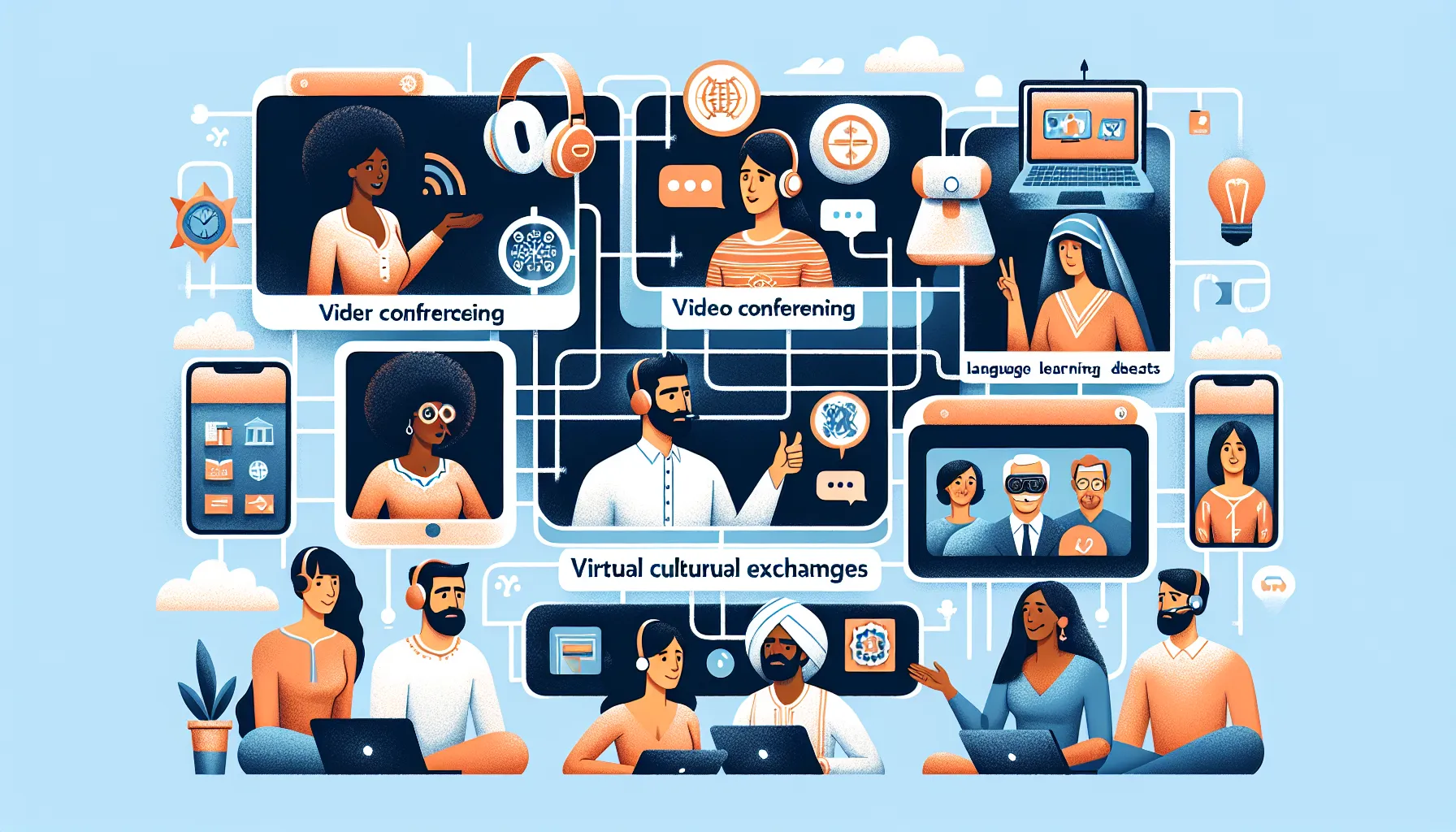 Virtual cultural exchange through digital platforms
Virtual cultural exchange through digital platforms
However, the digitalization of cultural diplomacy is not without its challenges. The digital divide remains a significant barrier, with disparities in internet access and digital literacy potentially exacerbating existing inequalities in educational opportunities. Moreover, the reliance on digital platforms raises concerns about data privacy, cybersecurity, and the authenticity of cultural experiences mediated through technology.
Despite these challenges, the potential of digital cultural diplomacy to foster global understanding is undeniable. By leveraging technology, educational institutions and policymakers can create more inclusive and far-reaching exchange programs. For instance, blended learning approaches that combine virtual and physical exchanges can provide students with a more comprehensive and nuanced understanding of foreign cultures.
Furthermore, the digital realm offers unique opportunities for cultural preservation and dissemination. Digital archives and virtual museums can make cultural heritage accessible to a global audience, promoting appreciation for diverse cultural traditions and fostering a sense of shared human heritage. This digital preservation is particularly crucial for endangered languages and cultures, providing a platform for their revitalization and global recognition.
The future of cultural diplomacy through educational exchanges lies in striking a balance between digital innovation and traditional forms of cultural engagement. While technology can amplify the reach and impact of these exchanges, it should complement rather than replace face-to-face interactions. The most effective cultural diplomacy strategies will likely be those that seamlessly integrate digital and physical experiences, creating multifaceted opportunities for cross-cultural learning and engagement.
As we navigate this evolving landscape of cultural diplomacy, it is essential to critically examine the ethical implications of digital exchanges. Questions of representation, cultural authenticity, and the potential homogenization of cultural experiences in the digital realm must be addressed. Developing frameworks for ethical digital cultural engagement will be crucial in ensuring that these exchanges contribute positively to global understanding and respect for cultural diversity.
In conclusion, the rise of cultural diplomacy through educational exchanges in the digital age presents both unprecedented opportunities and complex challenges. By harnessing the power of technology while remaining mindful of its limitations, we can create more inclusive, dynamic, and impactful cultural exchange programs that foster genuine understanding and cooperation across cultures.
Questions 21-26
Complete the summary below.
Choose NO MORE THAN TWO WORDS from the passage for each answer.
Cultural diplomacy has evolved in the digital age, moving beyond traditional 21 interactions to include virtual exchanges. Digital technologies have 22 access to cross-cultural experiences, with platforms like MOOCs and COIL initiatives facilitating knowledge exchange. The integration of 23 and machine learning has enhanced personalized learning experiences. However, the 24 remains a significant challenge, potentially exacerbating inequalities. Despite this, digital platforms offer unique opportunities for 25 and dissemination of cultural heritage. The future of cultural diplomacy lies in balancing digital innovation with 26 forms of cultural engagement.
Questions 27-32
Do the following statements agree with the claims of the writer in the passage?
Write
YES if the statement agrees with the claims of the writer
NO if the statement contradicts the claims of the writer
NOT GIVEN if it is impossible to say what the writer thinks about this
- Virtual exchange programs have completely replaced traditional face-to-face cultural exchanges.
- Artificial intelligence has the potential to provide culturally nuanced language instruction.
- The digital divide is no longer a significant issue in accessing online educational resources.
- Blended learning approaches can offer a more comprehensive understanding of foreign cultures.
- Digital archives are less effective than physical museums in preserving cultural heritage.
- Ethical considerations in digital cultural exchanges are of minimal importance.
Questions 33-40
Choose the correct letter, A, B, C, or D.
-
According to the passage, what has been a significant change in cultural diplomacy in the digital age?
A) The elimination of face-to-face interactions
B) The expansion of virtual cultural diplomacy
C) The reduction in educational exchange programs
D) The focus on tangible cultural artifacts -
What role do MOOCs play in digital cultural diplomacy?
A) They replace traditional university degrees
B) They facilitate knowledge exchange across borders
C) They primarily focus on language learning
D) They are exclusively used for professional development -
How does the passage describe the impact of AI and machine learning on educational exchanges?
A) They have made traditional learning methods obsolete
B) They enhance personalized and immersive cross-cultural experiences
C) They are too complex for most students to use effectively
D) They have had minimal impact on cultural understanding -
What concern does the passage raise about the digitalization of cultural diplomacy?
A) It may exacerbate existing inequalities in educational opportunities
B) It is too expensive for most institutions to implement
C) It reduces the quality of educational content
D) It leads to cultural homogenization -
What advantage of digital platforms for cultural heritage is mentioned in the passage?
A) They are more cost-effective than physical museums
B) They can make cultural heritage accessible to a global audience
C) They completely eliminate the need for physical preservation
D) They are immune to data loss and corruption -
According to the passage, what is crucial for the future of cultural diplomacy?
A) Completely replacing traditional exchanges with digital ones
B) Focusing solely on face-to-face interactions
C) Balancing digital innovation with traditional forms of engagement
D) Prioritizing quantity of exchanges over quality -
What ethical concern related to digital cultural exchanges is highlighted in the passage?
A) The potential for cultural appropriation
B) The risk of misrepresenting cultures
C) The overreliance on Western technologies
D) The exclusion of older generations from exchanges -
What does the passage suggest about the overall impact of digital technologies on cultural diplomacy?
A) They present both opportunities and challenges
B) They have had a predominantly negative impact
C) Their impact is still largely unknown
D) They have made traditional diplomacy obsolete
Answer Key
- B
- C
- C
- C
- A
- FALSE
- FALSE
- TRUE
- NOT GIVEN
- NOT GIVEN
- catalyst
- preconceived notions
- fluency
- diplomacy
- critical thinking
- advocates
- B
- B
- C
- D
- face-to-face
- democratized
- artificial intelligence
- digital divide
- cultural preservation
- traditional
- NO
- YES
- NO
- YES
- NOT GIVEN
- NO
- B
- B
- B
- A
- B
- C
- B
- A
This comprehensive IELTS Reading practice test focuses on the theme of cultural diplomacy through educational exchanges, offering a range of texts and question types that mirror the actual IELTS exam. By engaging with this material, test-takers can enhance their reading comprehension skills while gaining insights into the evolving nature of cultural diplomacy in our increasingly interconnected world.
For those looking to further explore related topics, you may find these articles informative:
- The Role of Exchange Programs in Fostering Global Cultural Understanding
- Cultural Exchange Through Language Learning
- Impact of Global Travel on Cultural Understanding
Remember, regular practice with diverse texts and question types is key to success in the IELTS Reading test. Good luck with your IELTS preparation!
